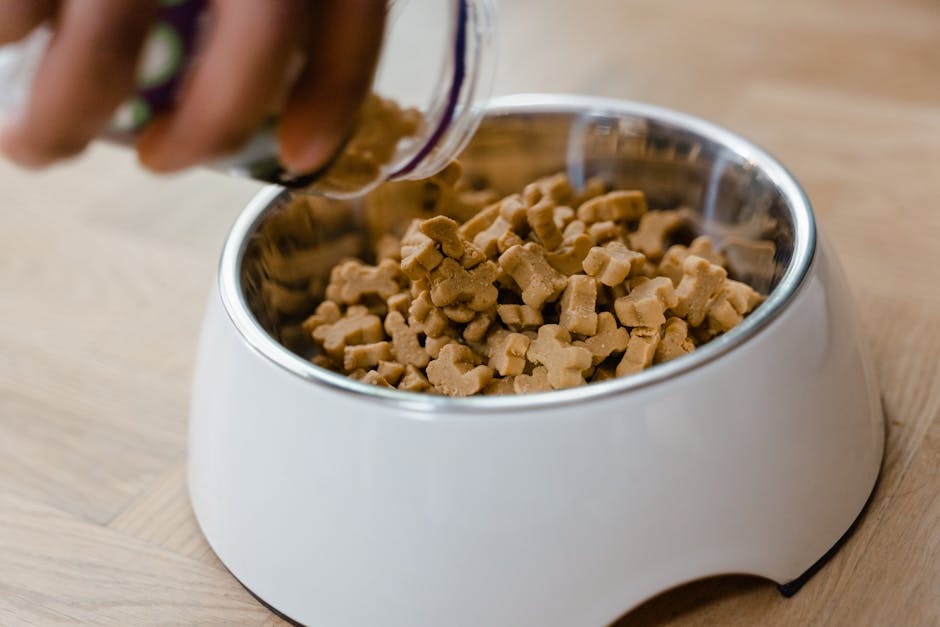The current dog food shortage is causing significant concern among pet owners nationwide. As we continue to experience the aftermath of the COVID-19 pandemic, supply chain disruptions have become a familiar challenge. However, when it comes to our furry companions, the impact feels much more personal. This shortage is a complex problem influenced by several factors, including staffing shortages, rising prices, and logistical challenges. In this article, we’ll explore the various elements contributing to this shortage and its implications for both consumers and producers.
Is There A Dog Food Shortage in 2024?
Many pet owners find themselves asking, “Is the dog food shortage still an issue in 2024?” The short answer is yes. While many industries have gradually recovered from the disruptions caused by the pandemic, the pet food sector continues to face challenges. The problem persists, manifesting primarily in the availability and cost of pet food. Wet food supplies, particularly, are experiencing significant delays due to dependence on overseas production.
Despite some improvements in certain areas, the shortage hasn’t fully resolved. Pet owners are still advised to plan carefully, seeking alternative brands or types of dog food to ensure their pets do not go hungry. The situation underscores the fragility of dependent supply chains and the need for more robust and resilient strategies moving forward.
Reasons Behind The Shortage
The current shortage isn’t due to a single cause but a blend of several critical factors. Foremost among these is the continued disruption of global supply chains. The pandemic accelerated many existing vulnerabilities, leading to delays in production and distribution. However, that’s not all. Raw materials like corn and soybeans, essential ingredients in many pet foods, are being redirected for human consumption. This shift has led to dramatic price increases, adding another layer of complexity to the shortage.
Moreover, labor shortages have crippled manufacturing capacities. With fewer workers, production lines have slowed, affecting supply. Delivery delays compound the problem, further straining an already stretched supply network. Added to this are labor disputes and strikes at major ports, restricting the nation’s ability to import necessary components such as vitamins and minerals vital for pet food production.
A Brief Look at The Dog Food Shortage 2023
In 2023, the dog food shortage became a stark reality for many pet owners. Canned pet foods were more readily available, but dry food took longer to replenish in stores. The shortage was most pronounced in wet cat food due to aluminum can shortages and shipping delays from production facilities overseas. Retailers faced difficulties in maintaining stock, forcing consumers to explore alternative options or switch to different brands gradually.
The price surged—some products increased by as much as 40% over the two years leading up to 2023. For many, this wasn’t just an inconvenience; it was a financial strain. Pet food insecurity became a reality, particularly in low-income areas, highlighting the need for solutions like pet food banks and community-driven resources to support affected families.
How Severe is the Dog Food Shortage?
The severity of the food shortage varies by region and product type. While canned foods and certain brands maintain a presence on store shelves, shortages are most acute for specific dry food lines and premium products. For consumers, this means adapting and sometimes making challenging decisions for their pets’ health and nutrition.
For those in economically disadvantaged areas, the shortage hits particularly hard. Food insecurity isn’t just a human issue. Many pet owners are making sacrifices, often sharing their meals with their pets or visiting pet food banks to secure necessary provisions. These coping strategies reveal a broader issue within society concerning food distribution and accessibility that needs addressing.
Impact on Consumers
The impact on consumers is both practical and emotional. On a practical level, rising prices and diminished availability mean pet owners must be strategic when purchasing food. Many have turned to online retailers or joined subscription services to secure a consistent supply. The emotional strain is also significant, as pet owners worry about meeting their pets’ nutritional needs.
Furthermore, demand for alternatives or substitutes is increasing. Brands that have managed to navigate supply chain disruptions more successfully—such as Canidae—have seen a rise in popularity. However, introducing a new food to a pet’s diet can require careful management, with gradual transitions and the use of probiotics to prevent digestive issues.
How Long Will This Shortage Last?
Determining the duration of this shortage is challenging. While some industry insiders predict improvements by the end of 2024, the situation remains fluid. Resolution depends on several factors, including resolving labor disputes, stabilizing supply chains, and managing cost pressures from raw material markets.
Pet owners should remain informed, staying attentive to market changes and exploring diverse options. It’s important to maintain flexibility and consider all available resources, including community networks and pet food assistance programs, during this period of uncertainty.
Effect on Businesses and Producers
Businesses and producers are feeling the impact as acutely as consumers. For producers, the shortage means recalibrating production strategies and sourcing alternatives to maintain output levels. This period has been a test of resilience and adaptability within the industry.
For retailers, there’s the challenge of managing customer expectations and maintaining transparent communication. Supporting local economies by sourcing within the country could provide a reprieve. However, doing so requires significant investment and policy support.
Conclusion
The dog food shortage presents a pressing challenge for pet owners, producers, and retailers alike. It highlights the vulnerabilities within our global supply chains and the need for more sustainable, resilient practices. As we navigate these uncertain times, understanding and adaptability are crucial for everyone involved. Rest assured, changes are underway to restore balance and ensure our beloved pets continue to thrive. For the latest updates on this and other business news, visit Opine Business.



